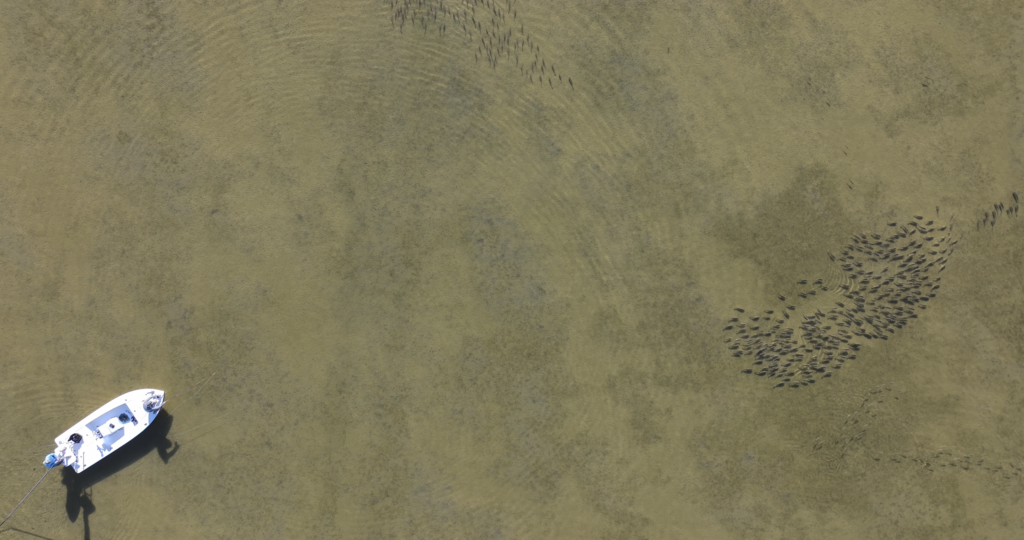Story by Eddy Arenas

Photo by Eddy Arenas
The sand flats of the Lower Laguna Madre in deep South Texas are regarded by many as an almost sacred place to fish. As barren as the sand may seem at first glance, on certain tides fish will ghost into these shallows like shadows. On extremely calm days, the surface of the water is a mirror, and it is impossible to see where the water ends and the sky begins. On those days, the silence of this remote wilderness can be deafening.
The views of this place are stunning, but the shocking clearness of the water makes stalking tailing fish here an exceptional challenge. You may think you can see them well in the air clear water, but they most certainly can see – and probably sense – you much better. This is their world and only the stealthiest angler will be successful here.
Slow, careful poling is the best bet for minimizing the pressure wave given off by a skiff tracking through shallow water. Fish become hyper-sensitive to even the slightest knock on the hull or vibration so as exciting as it can be to have a red tailing within casting distance, it’s best to slow everything down and have a calm approach. Often in such clear water, you’ll get one good cast before they spook. Conventional tackle can work here but given the conditions, the light touch of flyfishing can have more success.
Fish become hyper-sensitive to even the slightest knock on the hull or vibration so as exciting as it can be to have a red tailing within casting distance, it’s best to slow everything down and have a calm approach.
When it comes to fly choice, a small fly tied on a size 6 Mustad Signature Series fly hook with bead chain eyes helps keep the delivery as quiet as possible. Ghost shrimp can often be seen jumping at the surface of the water as the schools move through the shallows and I am a firm believer in matching the hatch. A white and tan shrimp pattern with fire orange sili-legs is my go-to for picky fish on the flats. I tend to avoid bulkier flies as more often than not the fish seem to shy away from them in this scenario.
Leading your target is another important factor to consider. Generally, when the fish are tailing they are eager to eat so as long as you can get their attention, you are in the game. Leading the fish and anticipating where to set up the fly greatly increases your odds. If it is done properly, schools of redfish will typically compete for your fly which is, quite simply, a heart-stopping experience.
That is not the case with black drum or sheepshead on these flats. Sheepshead, commonly referred to as the South Texas permit, are simply in another class. They are extremely picky and quite possibly the most observant fish on the flats. I find fly choice isn’t quite as important as presentation with sheepshead and it is not uncommon to lead sheepshead right up to your bow before they casually wave off and swim away.
Don’t be discouraged, however with planning, practice, the right tide and a bit of luck you will be surprised by what the sand has in store for you.
Eddy Arenas Jr. was born and raised in Los Fresnos in deep South Texas, where he has been fishing since he was old enough to hold a rod. His full-time job is serving as a Border Patrol Agent, although he is also the in-house photographer/videographer for Los Pescadores Fly Shop on South Padre Island, Texas.









